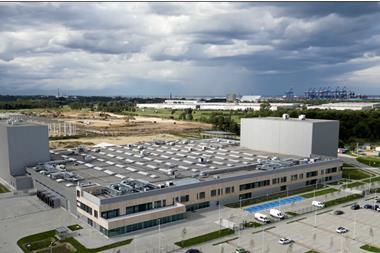The key to Denmark’s €41.3bn pension fund winning IPE’s Silver Award for Best European Public Pension Fund in 2005 is undoubtedly its ability to dig deeper to achieve the best possible solutions for its members. This is evident in its four-pronged approach to mastering pension fund management. Firstly, it considers the investments themselves. Secondly, it looks at its liabilities and obligations, and the contribution rates and administration it will need to meet them. Next, it needs to ascertain the fund’s overall objectives and how much risk it can take and lastly, and this is what sets ATP apart, it considers the interdependence and relationships between each of these factors.
ATP recognises it is stating the obvious in saying excellence in the first three areas is essential for the success of any pensions fund. It is aware of the efforts many of its fellow schemes have made to get it right, but feels the question of interdependence is too often neglected. ATP believes investment policies are often determined without due regard to liabilities and thus looking at the relationship between the key elements governing its fund distinguishes it from its peers.
ATP says that, since 2000, it has suffered like many other funds from increased liabilities, low interest rates and people living longer. In addition, returns have been volatile. Armed with the principles outlined above, ATP introduced some far-reaching measures to help it overcome these problems. This was facilitated by its strong focus on asset-liability modelling, which has been performed in-house now for a few years. The main development was hedging the interest rate risk against the fund’s liabilities. This was followed by the development of a dynamic asset allocation policy in 2003 that states that investment risk must be directly linked to the fund’s reserves and the risk tolerance levels its board sets. This has led to a number of significant projects concerning investments.
The first project was the pursuit of alpha, beta and liability hedging independently of each other through liability-driven investments. ATP says it has broken with tradition by not focusing on generating higher returns relative to specific benchmarks. It believes a better strategy is emphasising its liabilities in relation to absolute risk/return ratios at the expense of benchmarks and relative risk/return.
The starting point is ensuring ATP fulfils its commitments to its clients with minimal risk while hedging its liabilities to the best possible extent. But ATP recognises generating returns inevitably entails a certain degree of risk. How much risk is allowed for either beta or alpha depends on the level of the fund’s reserves which affects its objectives and risk tolerance.
ATP has set up independent teams to manage the three distinct portfolio types – alpha, beta and risk reduction. ATP says this is a fresh approach as it adds flexibility to the ‘beta trumps alpha’ philosophy usually associated with beta and alpha drivers. ATP says beta is usually generated first, before any decisions are taken to generate alpha as well. Separating them means ATP can take a more focused approach and manage risk better. It also makes accountability easier.
The next project is looking at ‘investment-driven liabilities’, signalling a new profit distribution strategy. ATP believes this is a natural step on from liability-driven investing. This ensures it considers its liabilities in the context of its investment strategy and risk limits. ATP feels its revamped profit distribution strategy sets a new standard by making bonus payments to pensioners consistent with the fund’s long-term investment strategy and asset allocation policy.
Finally, ATP brought the asset managers, asset liability modellers and actuaries under common leadership, since its experience shows close integration of these parties is necessary for the overall success of its integrated approach. This mirrors what ATP did with the alpha, beta and risk management teams. Hence, ATP has maximised the focus of its asset managers and their accountability.
ATP has reported highly satisfactory returns from its investments which have led to further improvements in its funding, despite the steep rise in life expectancy. In 2004, ATP’s returns were 18.9% or Dkr 49bn and in the first half of 2005, they were 14.5% or Dkr44bn. More than half came from interest rate swaps contracts that were made to hedge liabilities.













No comments yet